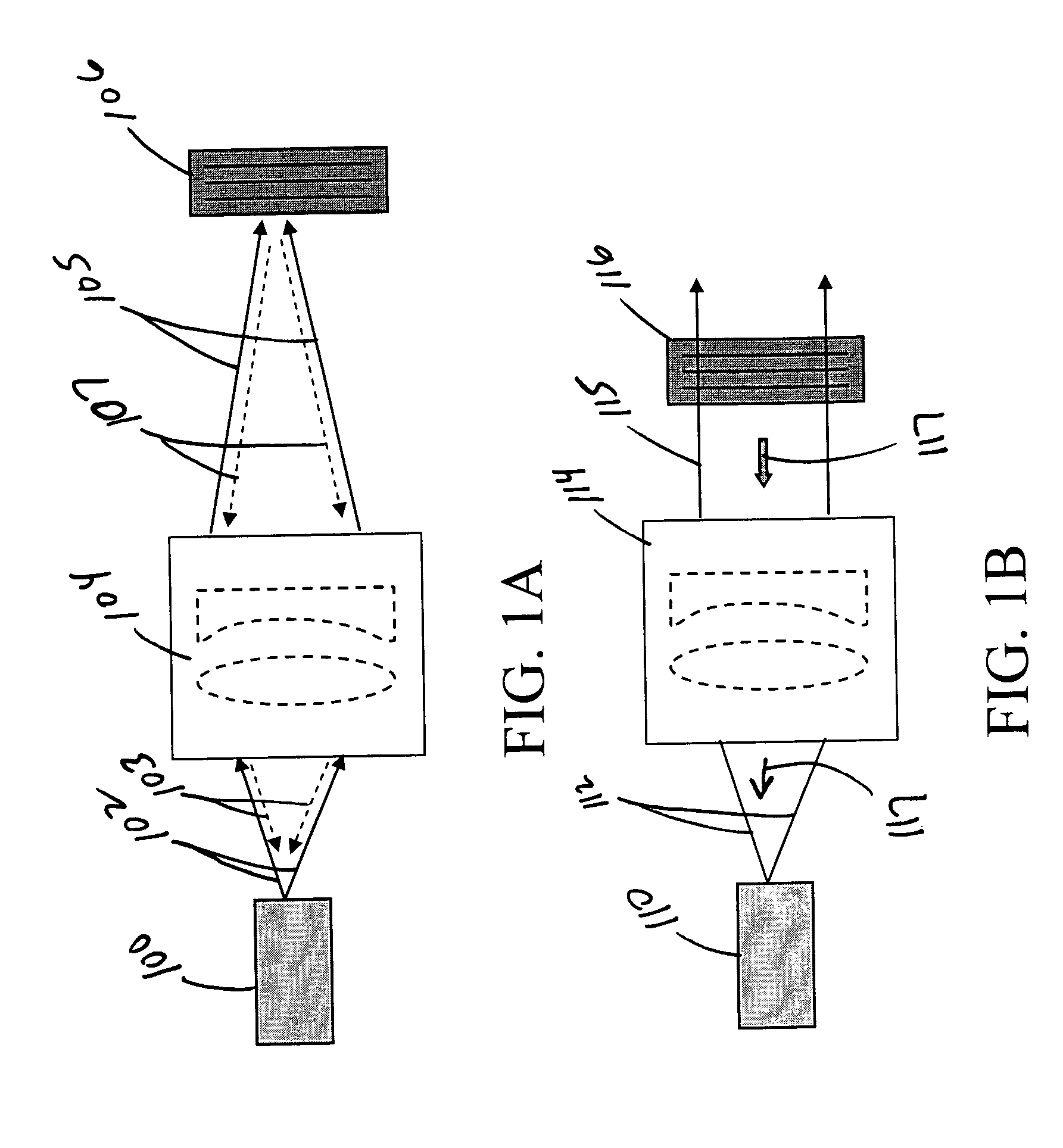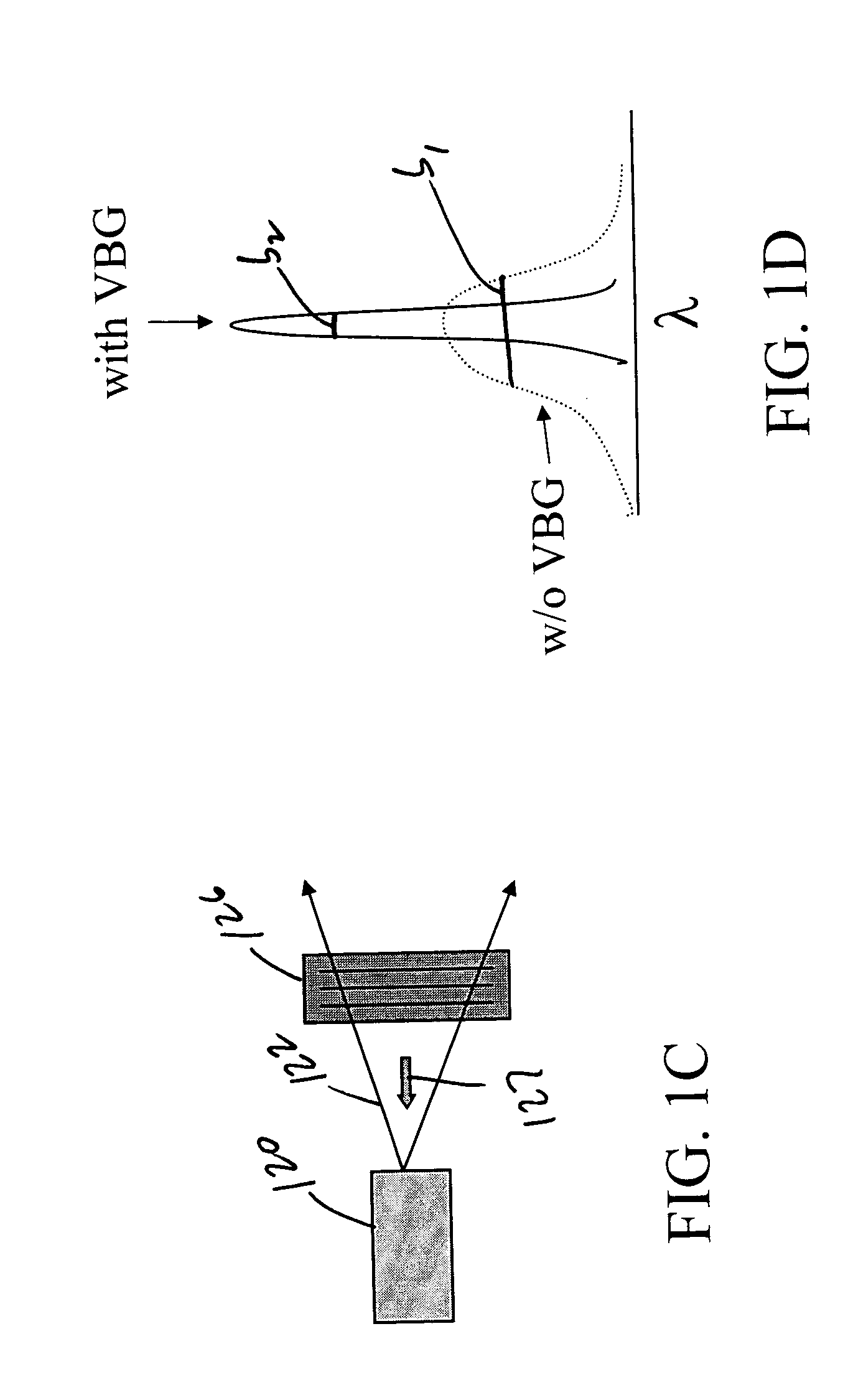Use of volume Bragg gratings for the conditioning of laser emission characteristics
a technology of laser emission characteristics and volume bragg gratings, which is applied in the field of light emitting devices, can solve the problems of not being wavelength-selective devices, reflectors, and complex laser cavities, and achieve the effect of large clear aperture and high damage threshold
- Summary
- Abstract
- Description
- Claims
- Application Information
AI Technical Summary
Benefits of technology
Problems solved by technology
Method used
Image
Examples
Embodiment Construction
[0043] Overview
[0044] There are at least two general approaches to using VBG elements for conditioning a characteristic of a light emitting device: a) using a VBG that is outside of the laser cavity (extra-cavity); and b) using a VBG that is inside laser cavity (intra-cavity).
[0045] As discussed above, a laser resonator may be viewed as a closed optical path formed between mirrors and / or other light-reflecting elements. Such a closed optical path is typically a condition that is necessary for lasing to occur. For this reason, it is desirable that any intra-cavity element added to the resonator does not alter this condition, lest it impede light generation via stimulated emission. By contrast to intra-cavity elements, extra-cavity elements may be free from such a constraint. Furthermore, the efficiency of light generation typically depends nonlinearly on single-pass cavity loss. Thus, it is also desirable that any intra-cavity element used for laser output conditioning have as litt...
PUM
 Login to View More
Login to View More Abstract
Description
Claims
Application Information
 Login to View More
Login to View More - R&D
- Intellectual Property
- Life Sciences
- Materials
- Tech Scout
- Unparalleled Data Quality
- Higher Quality Content
- 60% Fewer Hallucinations
Browse by: Latest US Patents, China's latest patents, Technical Efficacy Thesaurus, Application Domain, Technology Topic, Popular Technical Reports.
© 2025 PatSnap. All rights reserved.Legal|Privacy policy|Modern Slavery Act Transparency Statement|Sitemap|About US| Contact US: help@patsnap.com



